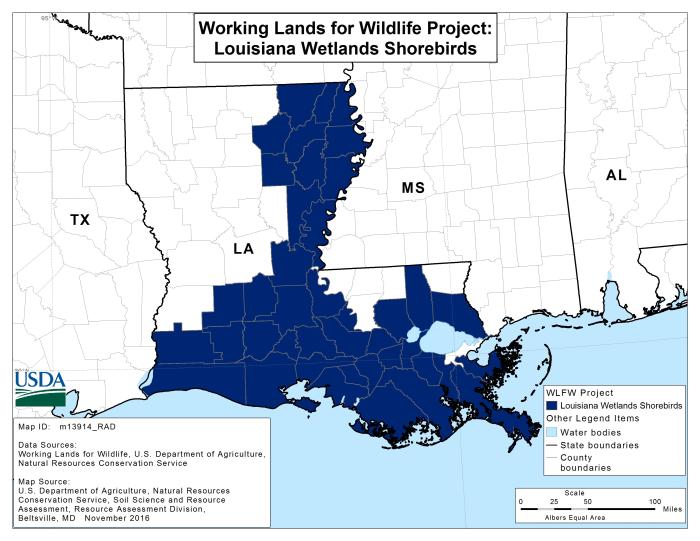Shorebirds of Louisiana Wetlands
Birds like the lesser yellowlegs (Tringa flavipes), buff-breasted sandpiper (Calidris subruficollis), stilt sandpiper (Calidris himantopus) and short-billed dowitcher (Limnodromus griseus) use Louisiana’s wetlands as pit stops during their annual journeys south.

Birds like the lesser yellowlegs (Tringa flavipes), buff-breasted sandpiper (Calidris subruficollis), stilt sandpiper (Calidris himantopus) and short-billed dowitcher (Limnodromus griseus) use Louisiana’s wetlands as pit stops during their annual journeys south. Those birds use a variety of wetlands along the Mississippi River and Gulf of Mexico coast, and they’re good barometers of quality and abundance of wetland habitat. The loss or degradation of wetlands because of development, agriculture, subsidence and erosion impacts many wildlife species, and NRCS is working with Louisiana producers to make wildlife-friendly improvements on working lands.
Farmers in parts of Louisiana are helping the lesser yellowlegs, buff-breasted sandpiper, stilt sandpiper and shirt-billed dowitcher by temporarily creating shallow wetland habitats on agricultural lands. As wetland habitats degrade, agricultural lands are increasingly called upon to provide multiple services on the same acres. Holding water on cropland fields and pastures can contribute to this goal while performing other ecological services such as groundwater recharge, minimizing soil erosion, and reducing sedimentation/nutrient runoff into adjacent streams.

NRCS offers technical and financial assistance to help farmers create shallow wetlands on agricultural lands. This assistance helps farmers plan and implement a variety of conservation activities, or practices, that benefit shorebirds.
Technical assistance is free to farmers. The agency’s staff of experts and conservation partners work side-by-side with farmers to develop a conservation plan. Each plan focuses on the restoration of wetland habitat and is tailored to the farmer’s property. These plans provide a roadmap for how to use a system of conservation practices to meet natural resource and production goals.
Financial assistance helps farmers pay for the adoption of conservation systems that benefit shorebirds and other wildlife including waterfowl, wading birds, and Louisiana’s experimental population of the endangered whooping crane. Common conservation practices include wetland wildlife habitat management, shallow water development and management, early successional habitat management, conservation cover and brush management.
The shorebird project is part of the Working Lands for Wildlife (WLFW) partnership, a collaborative approach to conserve habitat on working lands. WLFW provides technical and financial assistance through the Environmental Quality Incentives Program, a conservation program of the Farm Bill, the largest funding source for conservation on private lands.
This project builds on the agency’s former Migratory Bird Habitat Initiative, which was launched following the 2010 Deepwater Horizon oil spill to enable farmers to create habitat for migratory birds, providing an alternative to habitat in impacted coastal ecosystems. This initiative netted many positive results for wildlife, including higher numbers and biodiversity on lands in the program.

